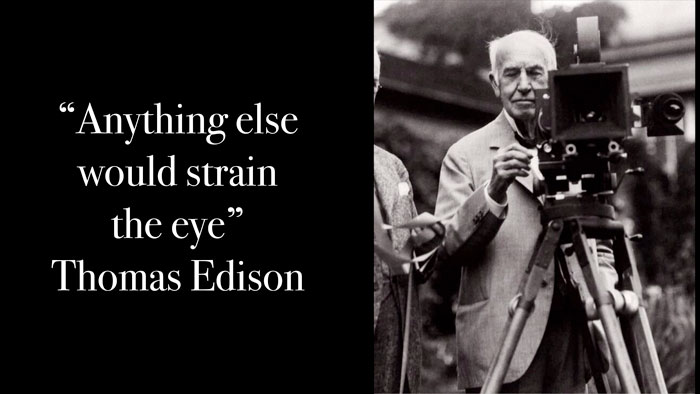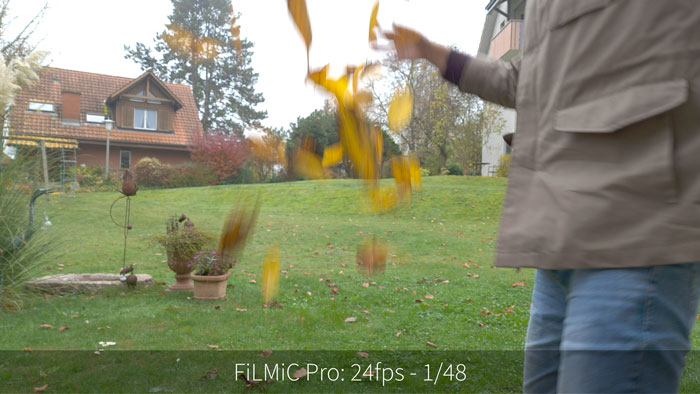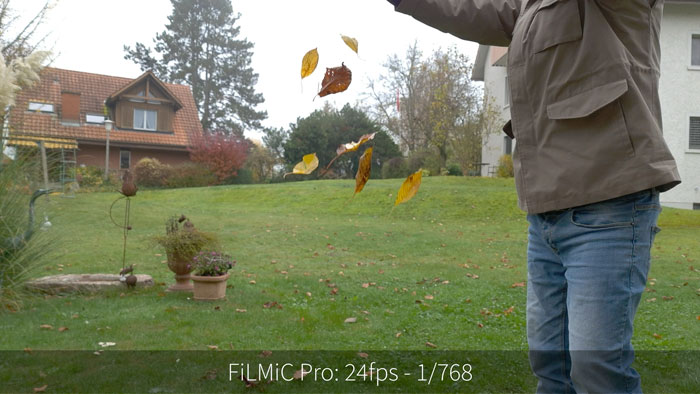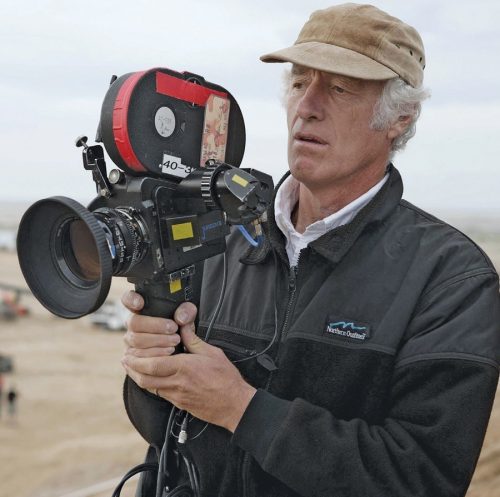Filmic Pro: Understanding 180 Degree Rule
The FiLMiC Pro camera app is designed to work around the 180 degree rule. And the rule is one of the steps you need to take to give your video the film look. But the rule is often misunderstood and can lead us to add unnecessary restrictions when we’re filming.
So let’s go through the 180 degree rule, where it comes from, and why we don’t always need to observe it exactly.
2 Rules
There’s two 180 degree rules in filmmaking. One is to do with camera placement and crossing the line, this applies generally when you are filming 2 people having a conversation.
The other 180 degree rule is to do with shutter speed. And the rule goes that your shutter speed should be double the number of your frame rate. So, if you are shooting at 24fps, your shutter speed should be 48.
Or rather, 1/48th of a second. Simple.
Well, if we’re being correct with our maths here, the 48 number is actually half of the 24 number. Because we’re dealing with fractions.
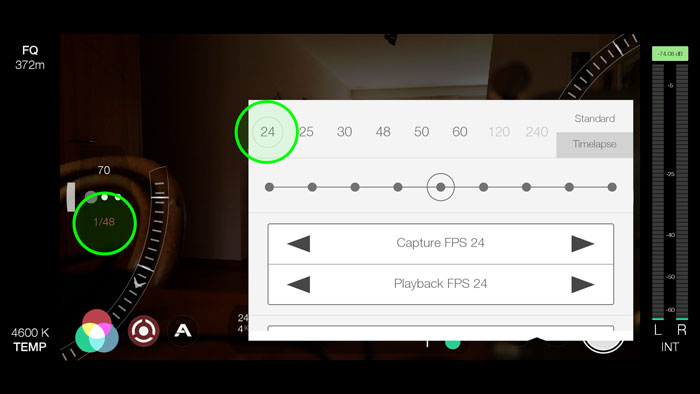
Like this: 24fps is 24 frames per second. Therefore, each frame lasts 1/24th of a second. A second of movie time is divided into 24 parts, each part being a frame.
When we set our shutter to 1/48, it means the shutter is open for 1/48th of a second. So that’s exactly half the time the frame is in position.
The problem is that some of us started to believe the shutter speed should always be “double” the frame rate, no matter how fast the frame rate. And this is really a misunderstanding of the 180 rule and is an unnecessary restriction when we set shutter speed using apps like FiLMiC Pro.
Old Film Cameras
To truly understand the 180 degree rule, we need to know where it comes from. Why does this rule refer to “180 degrees” when it’s all about fractions of a second shutter speed?
Well, in film cameras, where actual strips of film are fed through a mechanical device, the shutter is a piece of spinning metal. This spinning metal has a hole which can be adjusted in size. The size of the hole determines the angle of the shutter.
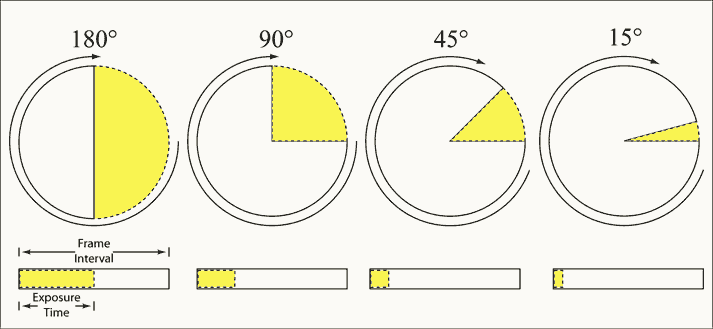
So imagine you have a film camera and you have set it to 24fps. This metal shutter will now spin at 24 revolutions per second as well. But how long the frame is exposed depends on how big that hole is.
Or rather, what angle it’s set to.
Shutter Angle
If it’s set to 90 degrees, the shutter is open for about 1/96th of a second (half as long as 1/48th of a second). And if the shutter is set to 180 degrees, it’s open half the time and closed half the time – or 1/48th of a second.
So this 24fps and 1/48th shutter speed was found to be the best compromise, sometime during the 1920s, when these things were being worked out.
At the time, one of the inventors of movie cameras, Thomas Edison, was pushing for 46fps as he said “anything else would strain the eye”. Well, he was wrong on that, although 46fps would have looked smoother. Thing is, it just wasn’t practical.
Smooth Motion
Shooting at 46fps would have used up almost double the movie stock, and therefore double the cost of processing the stock. As well, shooting film stock at 46fps would have reduced the possible exposure time of each frame, meaning filmmakers would need more light on set.
And then each movie reel delivered to cinemas would have to have been double the size, or the double the number, and so on. And this would have added a prohibitive cost to movie production.
Not only that, but movie cameras were limited by physics. Moving this rather fragile plastic strip of celluloid through a movie camera at 24fps was already enough of a challenge.
Remember, the film has to be moved the exact distance each time and then stopped so it doesn’t move at all for 1/48th of a second. Then moved on so the next frame is in place and so on. And this has to happen 24 times a second.
Going at 46fps would have meant more frequent mechanical breakdowns and cameras would have been less reliable. And all this is to illustrate where the 180 degree rule comes from.
So… why are we told to set our shutter speed at 1/48th (or double the frame rate)?
Well, there’s only one reason, really. And that reason is something known as motion blur.
Motion Blur
The digital cameras in our smartphones do not have physical shutters spinning around. There’s no shutter in your smartphone. Instead, shutter speed simply refers to the length of time the digital sensor behind the lens is switched on, per frame.
Remember, each frame is a still photograph. Movement in your video (or film) is an illusion created by playing one still image after another.
So, when the sensor is switched on, it is receiving light information for one still digital image. When it is switched off, the screen is black. No light is received. And when the video (or film) is played back, again it is switching on and off at a rate defined by the frame rate.
Joining the Dots
In other words, it’s flashing light on and off, at 24 times a second. At that speed, our brains join the dots and we only see movement. We don’t notice the light of the screen flashing on and off.
When you have your shutter speed set to 1/48th of a second, the shutter is open just long enough that movement in the frame will cause blur. Anyone who has taken a still photo will have experienced this blur, quite often ruining our photos. Although, motion blur in photos can transform the photo into stunning art, if used well.
In film or video, this motion blur helps to smooth the illusion of movement, as each still frame flicks to the next.
But if we’re shooting at 24fps and we start to reduce the shutter speed from 1/48, the video we produce begins to look a bit harsher on the eye. The movement feels less smooth.
A Hangover from History
100 years ago, filmmakers found a 180 degree shutter to be a good balance. They could create cameras that were reliable, didn’t shoot too much film and when it was projected up on the screen, it looked pretty smooth.
But if they could have shot at 60fps and projected at 60fps, as easily as we can with our smartphones, they probably would have shot 60fps.
So it’s important to understand that this motion blur created by a shutter speed double (or actually half) your frame rate, is only relevant around the 24 or 25 frames per second. Because it’s directly related to this compromise of having your still images flashing on and off 24 times a second.
But once you move above this rate, even to 30fps, the need to maintain this 180 degree shutter speed becomes less. That’s because the more frames per second you project on the screen, the smoother the motion looks anyway.
And another thing to remember is, this rule is only a guide…
It’s Only A Guide
What’s the difference between 1/48th of a second shutter speed and 1/50th of a second? Not much. In fact, I challenge you to shoot at 1/48 and 1/50 and see if you can spot any difference at all.
For that reason, it’s perfectly fine to set your frame rate at 24fps and your shutter speed at 1/50th. You will get almost exactly the same effect as if it was 1/48th.
And this is important because if you want to avoid flickering artificial light, in Europe and other areas, you need to set your shutter to multiples of 50.
In FiLMiC Pro, when you set your frame rate, all you need to do is scroll down to this setting where it says Auto Shutter. Now set this to 50hz, if you are in an area where the electricity is supplied at 50hz.
Higher Frame Rates
Some will tell you the 180 rule should be applied no matter the frame rate. So even at 60fps, 120fps, 240fps they maintain that you should set your shutter speed to double.
But this is really a misunderstanding of the rule. Regular old movie cameras shooting at 24fps certainly could not shoot at 240fps, which would mean film whizzing through the mechanism at 10 times the speed. To shoot at such high frame rates using film stock requires a specialist camera designed specifically for the task.
Arriflex 35 IIIC
As an example, the Arriflex 35 IIIC 35mm film camera released in 1982 had a maximum frame rate of 50fps.
Remember that this 180 rule comes from the compromise of shooting at 24fps, which looks smooth but is still flashing light on and off 24 times a second. A 180 degree shutter was needed to maintain a sense of natural smoothness.
But once you move above this 24fps, there’s less of a gap between each still image so motion begins to look smoother regardless of shutter speed.
Now if you are shooting at 60fps, for example, you do not need to set your shutter speed to 1/120th. In fact 1/60th will be fine. Or 1/100th.
What about if you want to shoot at 60fps and playback at 24fps. What shutter speed should you use then? Well, it’s actually impossible to shoot at 1/48th of a second and setting your shutter speed to 1/60th would look fine.
In Conclusion
So, to sum up, the 180 degree rule should be taken as a rough guide. But really, the important thing is to understand what the shutter speed does to the look of your video.
Rather than slavishly applying the 180 degree rule to every shot, experiment and learn how shutter speed and frame rate work together to create a feeling and a style in the shot.
No one way of doing it is right or wrong, because it depends what you want to do with the shot.
For example, when filming action sports, filmmakers often use high shutter speeds to create more of a gritty style. That high shutter speed look creates a different type of energy in the shot. It becomes more visceral, more impactful. You can see clumps of dirt fly up, for example.
And that’s why we need to understand shutter speed and the 180 degree rule. Then, rather than simple rule followers, we will become creative filmmakers.
Eager to learn more?
Join our weekly newsletter featuring inspiring stories, no-budget filmmaking tips and comprehensive equipment reviews to help you turn your film projects into reality!
Simon Horrocks
Simon Horrocks is a screenwriter & filmmaker. His debut feature THIRD CONTACT was shot on a consumer camcorder and premiered at the BFI IMAX in 2013. His shot-on-smartphones sci-fi series SILENT EYE featured on Amazon Prime. He now runs a popular Patreon page which offers online courses for beginners, customised tips and more: www.patreon.com/SilentEye


